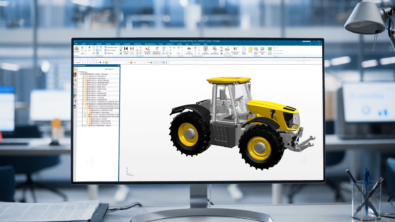Can I Afford Product Customization?

To remain competitive, manufacturers in many industries are forced to offer product customization to exactly fit customer requirements. This flexibility comes at a price—higher costs, longer lead-times, greater complexity. At the same time, manufacturers are under as much pressure as ever to reduce costs, lead-times, and complexity.
See Rulestream ETO software for yourself by attending one of these on-demand webinars: An Introduction to Engineer-to-Order Process Automation for Industrial Machinery using Rulestream or Create Custom Engineering Applications with Minimal Coding.
A recent survey from Tech Clarity on Product Customization Trends here shows many companies are increasing product customization as a competitive advantage, some are decreasing the degree of product customization to save money, and only few companies are “holding steady”. My first-hand observation not only confirms these trends, but identified that some companies are doing product customization really, really well—and, no surprise, these are the market leaders.
There are two fundamental levels of product customization:
-
- Configure-to-order (CTO) products offer certain pre-determined combinations of features and options. Customers can pick from these combinations the closest match to their requirements.
-
- Engineer-to-order (ETO) products are individually engineered to each customer’s specification, offering an exact match to their requirements.
Because CTO products have pre-determined configurations, they are pre-engineered and pre-validated, thereby tempering the negative impact of customization on cost, order lead-times, and process complexity, but at the price of increased initial design and validation. ETO manufacturers bear the full impact at order-time for product customization. The following charts illustrate the typical cost-differences facing manufacturers of ETO products, CTO products, standard (non-customized) products.

Recently, I’ve seen some ETO manufacturers are trying to migrate all or parts of their product portfolio to CTO, sometimes under the initiative label of “ETO2CTO”. They are tempted by the allure of lower costs, lead-times, and complexities while still offering a product that can be somewhat tailored to specific customer needs.
With respect to this trend, I’ve seen successes and I’ve seen startling failures. It depends on the specific industry… in certain industries, ETO is necessary—either customized products offered are so complex it’s not possible to pre-engineer all product variants, or, customers expect customized products which are engineered to precisely match their exact requirements and/or they demand the highest possible operating efficiency.
If you’re in an ETO industry and attempt ETO2CTO, you may well be placing yourself in deep trouble.
 Here is one example from the power systems industry where both: 1) customers demand customized products that precisely meet their requirements and 2) operating efficiency positively rules. This business dispatched Engineering for two years to develop (design, pre-engineer, and pre-validate) a CTO product to supersede their existing ETO product. I received a phone call from them one day where they explained, “While the new product is good, the market has flat-out rejected it because it can’t be customized enough.” They pleaded with me to help them do ETO more efficiently. They were too late. Within 6 months of that call they were acquired by a competitor. I’m pretty sure this was not the ending their Executive Team had hoped for when they commenced ETO2CTO.
Here is one example from the power systems industry where both: 1) customers demand customized products that precisely meet their requirements and 2) operating efficiency positively rules. This business dispatched Engineering for two years to develop (design, pre-engineer, and pre-validate) a CTO product to supersede their existing ETO product. I received a phone call from them one day where they explained, “While the new product is good, the market has flat-out rejected it because it can’t be customized enough.” They pleaded with me to help them do ETO more efficiently. They were too late. Within 6 months of that call they were acquired by a competitor. I’m pretty sure this was not the ending their Executive Team had hoped for when they commenced ETO2CTO.
Because of their industry, instead of investing in CTO, they should have invested in becoming really good at ETO… using rules-based ETO automation to drive down the cost/lead-time/complexity of ETO.
The Tech Clarity survey shows market leaders not only use ETO to their competitive advantage but at the same time they effectively differentiate themselves on cost and lead-time, demonstrating it is absolutely possible to get really good at ETO. Babcock & Wilcox Power Generation Group has done just that.
If you’re in a heavily ETO industry, don’t listen to the ETO2CTO sirens on the rocks. I would encourage you to look at ETO Automation software, like Rulestream from Siemens. Don’t give up on ETO… get good at ETO!
Stay tuned for part 2 of this discussion! I’ll talk about of leveraging ETO as a competitive advantage in a typically non-ETO industry.

About the Author: Rick Smith is a product manager for the Rulestream ETO solution at Siemens PLM Software. He abhors wastefulness and has spent three decades helping manufacturing businesses become more competitive and profitable by stomping out inefficiencies across their enterprises.


